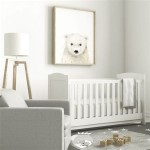How To Decorate Small Spaces Living Room
Maximizing space and creating a welcoming atmosphere in a small living room can be a design challenge. However, with thoughtful planning and clever strategies, even the most compact space can be transformed into a functional and stylish haven. This article explores practical tips and design principles for decorating small living rooms to create a sense of spaciousness, comfort, and visual appeal.
Embrace Multifunctional Furniture
One of the most effective ways to optimize space in a small living room is to incorporate multifunctional furniture. Sofa beds, ottomans with storage compartments, and coffee tables with built-in shelves provide dual functionality, maximizing space and minimizing clutter. For instance, a sofa bed can serve as both seating and a sleeping area, while an ottoman can double as a footrest and a storage space for blankets or books. These furniture pieces add flexibility and practicality to the room without compromising on comfort or style.
Another key aspect of multifunctional furniture is its ability to create a sense of flow and openness in the space. By using furniture that serves multiple purposes, you minimize the need for separate pieces, which can make the room feel crowded. For example, a console table placed behind the sofa can function as a media stand, display shelf, and additional storage for decorative items.
When choosing multifunctional furniture, consider the specific requirements of the room and the desired aesthetic. Look for pieces that are both functional and visually appealing, seamlessly blending into the overall design theme. For example, a sofa bed with sleek lines and neutral upholstery can complement a modern living room, while a vintage-inspired ottoman with intricate details can add a touch of charm to a traditional setting.
Prioritize Light And Openness
Light and openness are crucial elements in creating the illusion of space in a small living room. Maximizing natural light is essential, as it instantly brightens and enlarges the area. If the room receives limited sunlight, consider using light-colored paint on the walls and ceiling to reflect existing light and create a feeling of spaciousness. White, cream, and pale beige are excellent choices for small spaces, as they visually expand the area.
Incorporate mirrors strategically to reflect light and create the illusion of depth. Placing a large mirror opposite a window can amplify natural light and make the room feel larger. Alternatively, use smaller mirrors to add subtle reflections and enhance the overall brightness of the space. When selecting mirrors, choose frames that complement the existing decor and avoid overly ornate designs that can overwhelm the space.
To further enhance the sense of openness, consider using sheer curtains instead of solid drapes. Sheer curtains allow natural light to filter through, creating a sense of airiness and preventing the room from feeling enclosed. Additionally, using glass or acrylic furniture can add visual lightness to the space. If the room has a low ceiling, consider using tall lamps or light fixtures with vertical lines to draw the eye upwards and create a sense of height.
Embrace Minimalism And Vertical Space
A minimalist approach to decorating a small living room can significantly enhance the feeling of spaciousness. Resist the urge to overcrowd the space with excessive furniture or decorative items. Instead, prioritize essential pieces and focus on creating a clean and uncluttered look. This doesn't mean sacrificing style; it simply means selecting furniture and accessories that are functional and visually appealing without being overwhelming.
Vertical space is often overlooked in small living rooms, but it offers a wealth of potential for storage and display. Utilize wall shelves, floating shelves, and wall-mounted organizers to maximize vertical space and minimize floor clutter. These storage solutions not only create visual interest but also free up valuable floor space, making the room feel less cramped.
When selecting wall decor, opt for artwork and photographs that are proportionally appropriate to the space. Avoid using oversized or heavy pieces that can overwhelm the area. Instead, focus on small-scale prints, abstract art, or minimalist designs that add visual interest without overcrowding the walls.
Color Palette And Pattern
Color plays a crucial role in creating the desired ambiance within a small living room. While light and neutral colors are generally recommended for visually expanding the space, incorporating pops of color can add personality and visual interest. Consider using a neutral color palette for the walls and furniture, then introduce accents of color through throw pillows, blankets, rugs, and artwork.
When choosing patterns, focus on small-scale patterns or geometric designs that can add visual interest without feeling overwhelming. Avoid large-scale patterns or busy designs that can make the space feel cramped. Similarly, use patterns sparingly and balance them with solid colors to create a harmonious look.
Consider using a cohesive color scheme throughout the space to create a sense of unity and flow. For example, a simple palette of white walls, gray furniture, and accents of blue can create a clean and sophisticated look. Alternatively, a playful palette of yellow, green, and orange can add vibrancy and warmth to the space.
Strategic Use Of Lighting
Lighting can significantly impact the ambiance and perceived size of a small living room. Natural light is the most desirable, but using a combination of different lighting sources is crucial for creating a welcoming and well-illuminated space. Task lighting, accent lighting, and ambient lighting should be considered to achieve a balanced and functional lighting plan.
Task lighting is essential for specific activities such as reading, working, or playing games. Table lamps, floor lamps, or overhead lighting can provide focused illumination for these tasks. Accent lighting is used to highlight specific features, such as artwork, sculptures, or architectural details. Use spotlights, picture lights, or string lights to create visual interest and draw attention to particular areas.
Ambient lighting provides general illumination and sets the overall mood of the room. Recessed lighting, ceiling fixtures, or lamps with warm white bulbs can create a cozy and inviting atmosphere. Experiment with different lighting techniques to find the best balance for your small living room, ensuring that the space is functional and aesthetically pleasing.
Conclusion
Decorating a small living room creatively and efficiently requires a strategic approach. By embracing multifunctional furniture, prioritizing light and openness, opting for a minimalist aesthetic, using color and pattern thoughtfully, and employing strategic lighting techniques, even the smallest space can be transformed into a comfortable and stylish haven. The key is to prioritize functionality and visual appeal, creating a space that is both inviting and visually appealing.

Small Living Room Design Ideas
:strip_icc()/cdn.cliqueinc.com__cache__posts__277814__how-to-decorate-a-small-living-room-277814-1551117587765-main.700x0c-4309ac2c88e045309331c6a3488108f1.jpg?strip=all)
35 Designer Approved Small Living Room Ideas

Small Living Room Ideas 3 Easy Design Strategies Spaces

15 Designer Tips For Living Large In A Small Space

Small Living Room Ideas How To Design At The Best Use Of Space Décor Aid

44 Best Small Living Room Ideas How To Decorate A

Small Living Room Design Ideas Stunning Of Rooms Home S Remo Long Narrow

Small Living Room Decorating Ideas 5 Tips To Open Up Your Space

18 Small Living Room Design Ideas To Transform Your Space

Small Living Room Design Ideas
Related Posts







